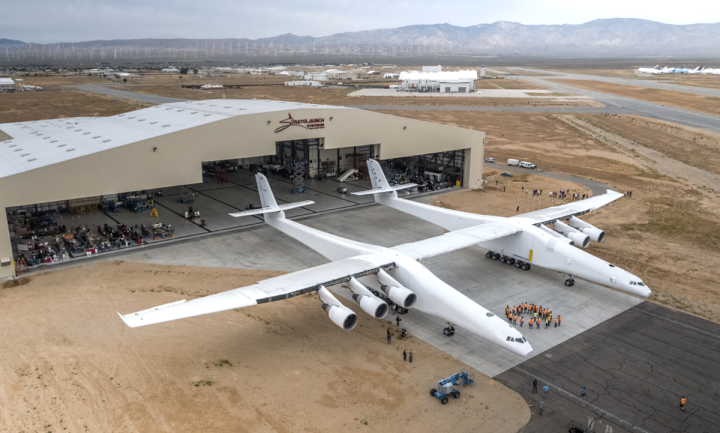
The gargantuan aircraft, which thanks to its twin fuselage makes it look rather like two planes welded together, was hauled out of a Mojave Air and Space Port hangar in California this week to begin preparations for a series of ground-based tests.
Designed by Vulcan Aerospace — a company launched in 2015 by Microsoft co-founder Paul Allen — the Stratolaunch is 250 feet long and stands 50 feet high. It can carry a payload weighing up to 550,000 pounds, and uses six engines typically used by a Boeing 747 to power it along.
It’s not a passenger plane, nor a ridiculously ostentatious private jet for Mr. Allen, but instead an aircraft designed especially for releasing rockets that will carry satellites into space.
The Stratolaunch, rather like the rocket systems designed by SpaceX and Blue Origin, focuses on reusability as a cost-effective way of launching space missions. Allen’s design, however, clearly differs in that it takes an “airport-style approach.” The plane is designed to carry a rocket on the underside of its central wing, releasing it when it reaches around 35,000 feet. Such a system would thereby incur lower fuel costs than a rocket launched from the ground. Also, with its 2,000-mile range, it will have greater flexibility over where it can take off and land compared to fixed-location rocket launches. The system thus “significantly reduces the risk of costly delays or cancellations,” the team says on its website.
With the likes of SpaceX and Blue Origin in mind, Allen says that the Stratolaunch will offer its customers “a consistent, flexible, and viable alternative to traditional ground-launched rockets.”
Cheaper access to low-Earth orbit, Allen explains in a blog post, would allow the launch of more satellites for scientific research and monitoring, though it’s not clear how the Stratolaunch’s running costs will compare to rival systems.
If tests over the coming weeks and months go according to plan, the enormous Stratolaunch could take to the skies as early as 2019. And that’s something we can’t wait to see.


